Insights
How to create the ultimate marketing tag team: Email and SMS strategies for 2025
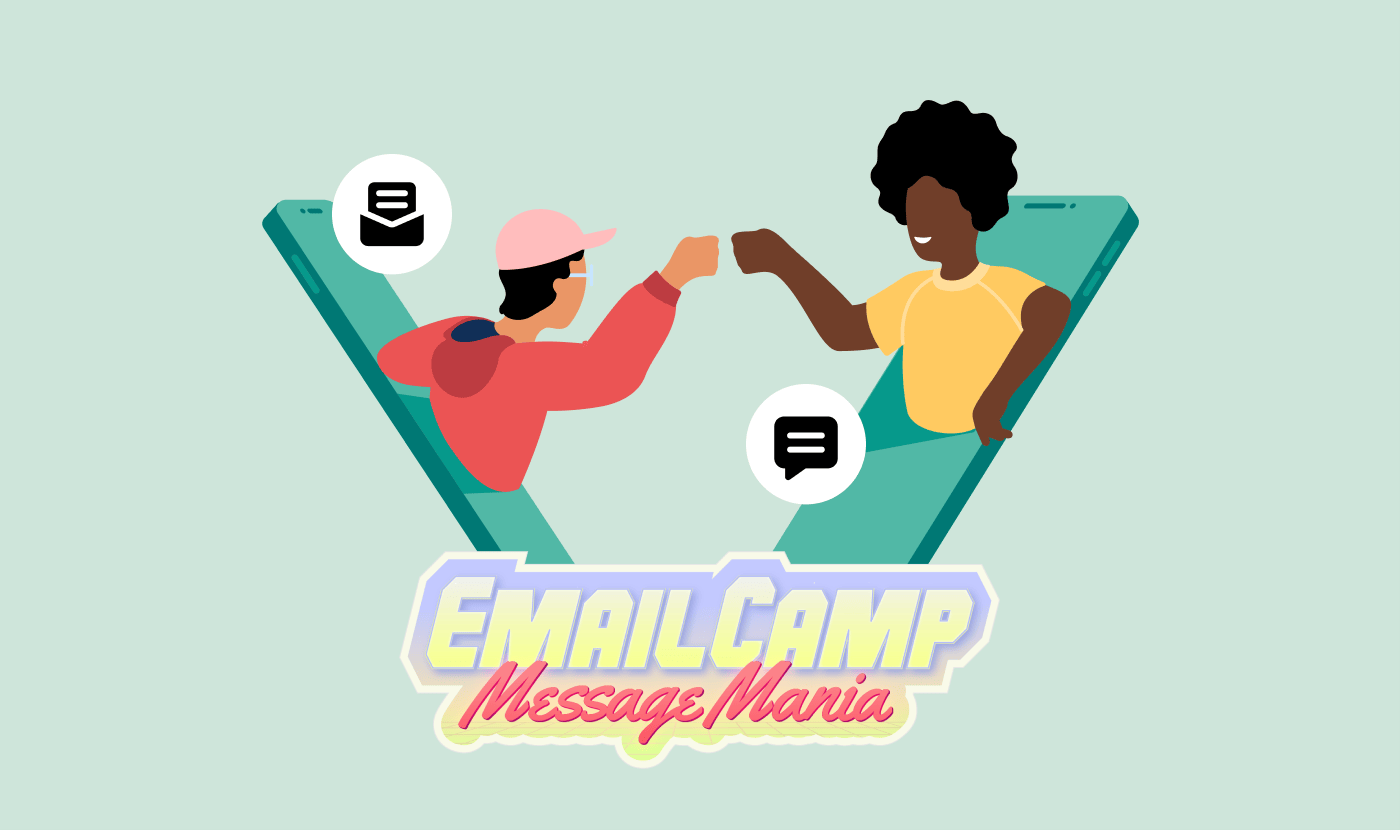
Insights

As digital marketing channels multiply, businesses find it increasingly difficult to reach and engage customers.
Should they focus on SMS vs email marketing, or both? And if both, how can they coordinate these channels without overwhelming their audience?
At Email Camp 2024, Elizabeth Jacobi, founder of MochaBear Marketing and a seasoned expert with over 20 years in marketing automation, shared actionable strategies for blending email and SMS into a cohesive, high-performing duo.
At Email Camp 2024, Elizabeth Jacobi of MochaBear Marketing taught the audience about the powerful connection between email and SMS marketing.
The key is thoughtfully orchestrating both channels to build meaningful connections. When used strategically, email and SMS together can boost open rates, prompt quicker responses, and drive conversions that neither channel could achieve on its own.
Here’s a closer look at Jacobi’s insights on building the ultimate email and SMS tag team.
Jacobi emphasized the distinct strengths of email and SMS and how combining them creates a versatile messaging strategy:
Looking at successful mobile marketing examples across industries, businesses that coordinate both channels see significantly higher engagement rates. For example, consider Bluemercury’s approach to email x SMS marketing for abandoned cart notifications.
If a customer abandons their cart, Bluemercury sends a timed email with product details.
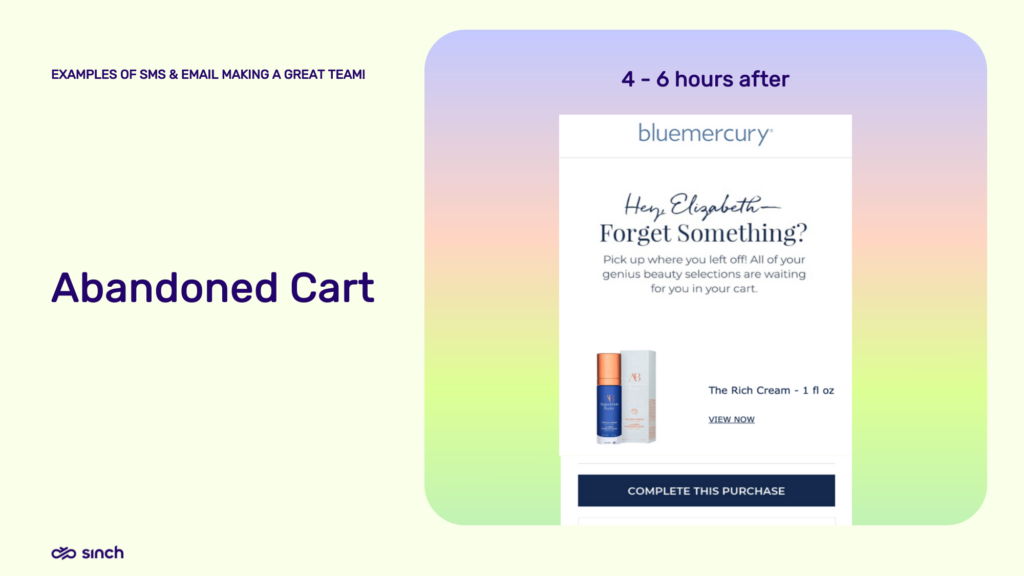
Then, if there’s no response with in 12 hours, they send a concise SMS reminder like the one below.
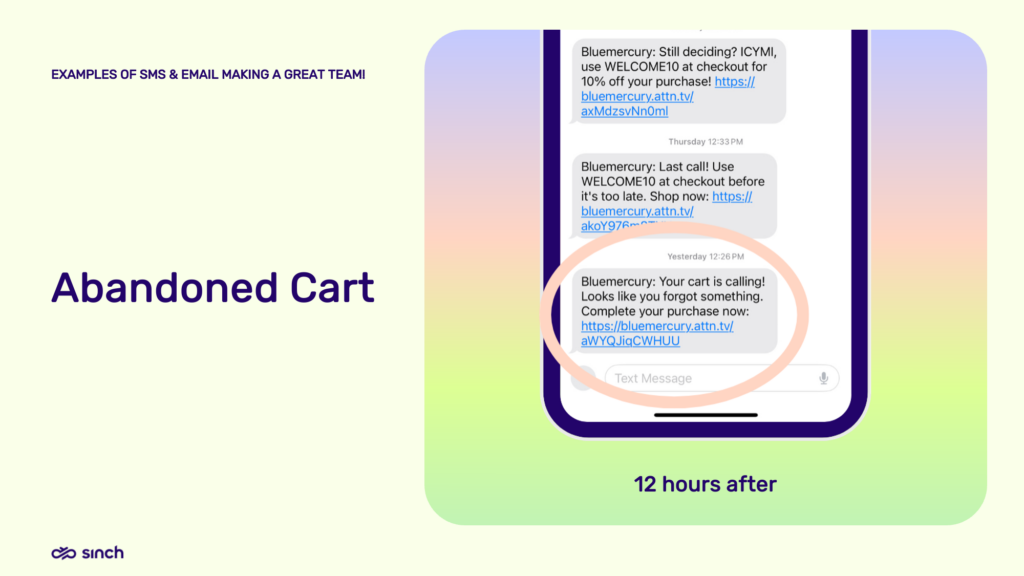
This multi-channel strategy meets customers where they are—whether at their desk or on the go.
The key advantage of this combination lies in its versatility. Email offers rich visuals and details, while SMS grabs attention with brief, urgent messages. By coordinating these channels, you create multiple touchpoints without overwhelming your audience.
Think of email as your storyteller and SMS as your quick-response messenger. Together, they form a communication system that respects both your customers’ time and their preferred ways of engaging with your brand.
Need some inspiration for your next SMS campaign? Check out these 40+ promotional text message examples that you can use at various points of the customer journey.
When designing your email x SMS marketing strategy, remember that email is ideal for in-depth engagement while SMS campaigns are great for immediate, action-oriented updates. Jacobi’s session outlined several best practices to squeeze the most value out of each channel.
Random messaging across channels creates confusion, not conversions. Coordinating email and SMS requires careful planning.
Create targeted segments based on purchase history, browsing behavior, or engagement with previous campaigns to tailor your messages.
For instance, you can reserve SMS for:
Meanwhile, use email for:
When customers trust you to send relevant content, they’re more likely to stay engaged and convert.
A customer who opens shipping notifications via text but clicks on product recommendations in emails is showing clear channel preferences.
Jacobi shared a retail case study that showed that only 1% of SMS-only subscribers made purchases, compared to 24% of email-only, but engagement across both channels raised the rate to 51%.
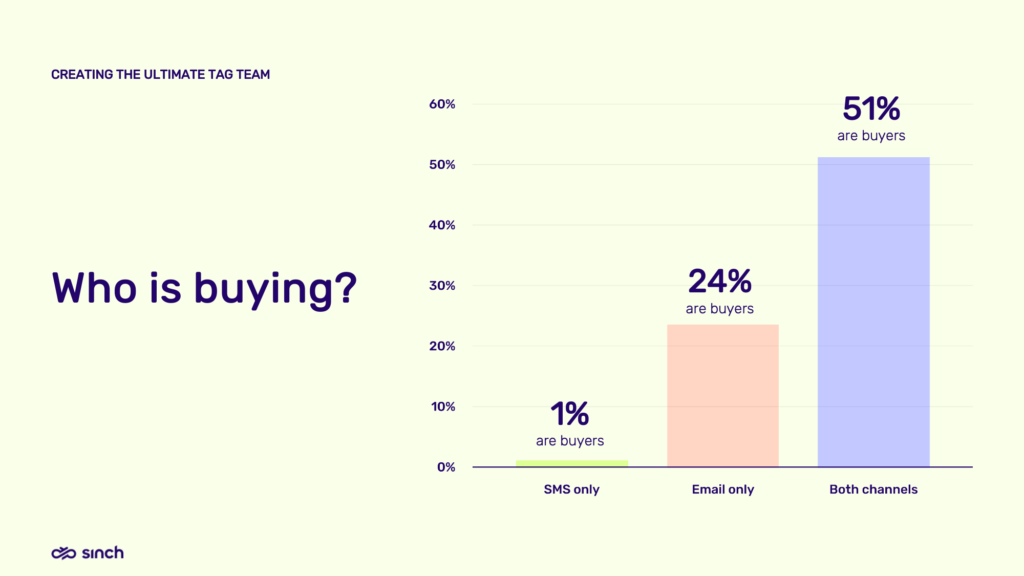
Watch for these engagement signals in your data:
Start by identifying your highest-performing messages in each channel, then adjust future campaigns based on the open rates, click-through rates, and conversion rates from each segment.
Some customers might click through product launches in email but respond better to flash sales via text. Others might ignore promotional emails but always open shipping updates.
Watch for these engagement signals:
Use response data to guide your strategy. This will help you identify your most valuable customers and those engaging across both channels. These insights enable you to create VIP experiences, like early access notifications via SMS followed by detailed product launches in email. You can always adjust your flows if customers engage more with SMS reminders but prefer browsing products via email.
Once you have your segments defined, timing becomes essential. Using SMS requires a keen sense of when messages will have the most impact.
Texts create urgency that email can’t match, making SMS ideal for time-sensitive content.
Reserve SMS for moments when immediate action matters:
Save your detailed messaging for email. Your SMS should complement, not duplicate, your email content.
Think about your customer’s daily rhythm. Avoid sending texts during typical sleeping hours or busy work periods. Most people check their phones first thing in the morning and during lunch breaks – so these are prime times for urgent offers.
Each SMS should drive a single, clear action. Save the product details and creative visuals for email, where customers have time to browse and consider their options.
The most effective customer journeys aren’t accidental – they’re carefully designed to deliver the right message through the right channel at the perfect moment. Here’s how to map these touchpoints and create automation flows that make every interaction count.
A great customer journey is intentional, not accidental. Jacobi illustrated this with a personal shopping experience:
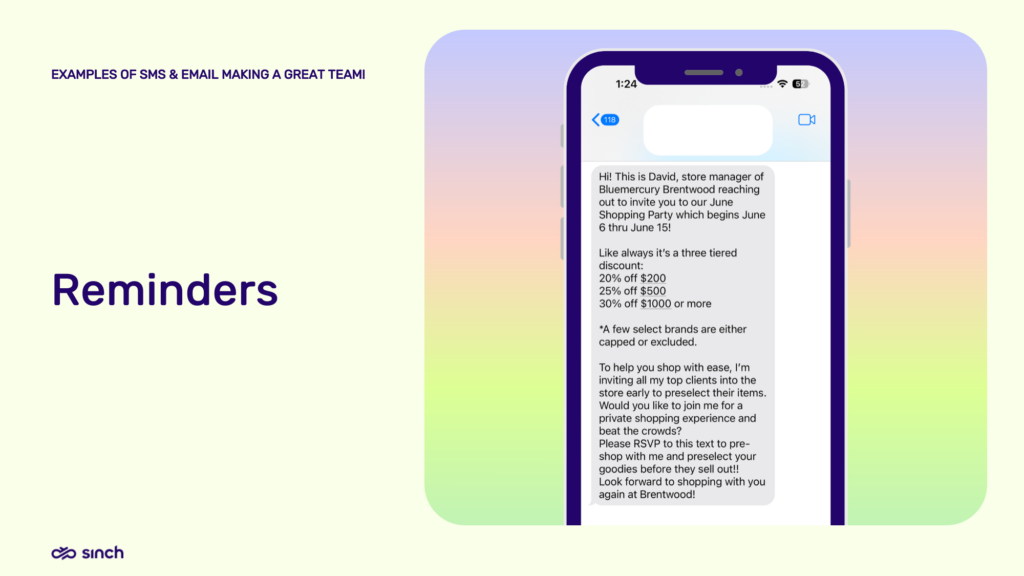
This example highlights the value of assigning distinct roles to each channel. And you can do this at different points of the customer journey. For example, you could map key touchpoints where each channel shines, like:
Look for opportunities to make each channel feel distinct yet connected, and consider platform-specific strengths when planning your journey. Email works well for relationship building through storytelling, while SMS creates momentum through timely, action-oriented messages.
Automation ensures cohesive messaging and will free up resources for strategy.
Identify critical moments in your customer lifecycle where automation adds value. Build flows that recognize which channels each customer prefers and respects those preferences.
Jacobi shared how Bluemercury’s smart automation can work: Their system recognizes cart abandonment, triggers a rich email first, then only sends an SMS follow-up if needed. This graduated response prevents overwhelming customers while maintaining engagement.
In short? Design your automation flows to:
And, of course, test your automation timing. As Jacobi notes, “While we all love to say that automation can be ‘set it and forget it,’ that is not how we optimize.”
“While we all love to say that automation can be ‘set it and forget it,’ that is not how we optimize.” – Elizabeth Jacobi, Founder of MochaBear Marketing
Keep testing and adjusting your automation logic. Track which sequence combinations drive the most engagement and sales. Then use those insights to refine your flows, ensuring each automated message adds value to the customer experience.
Make your workflows feel invisible to customers while creating consistent experiences across every touchpoint.
If you’re introducing SMS, start with your most engaged email subscribers. You can position SMS as a VIP channel for exclusive offers – which is what retailer Ruby Star did for flash sales and weekend specials.
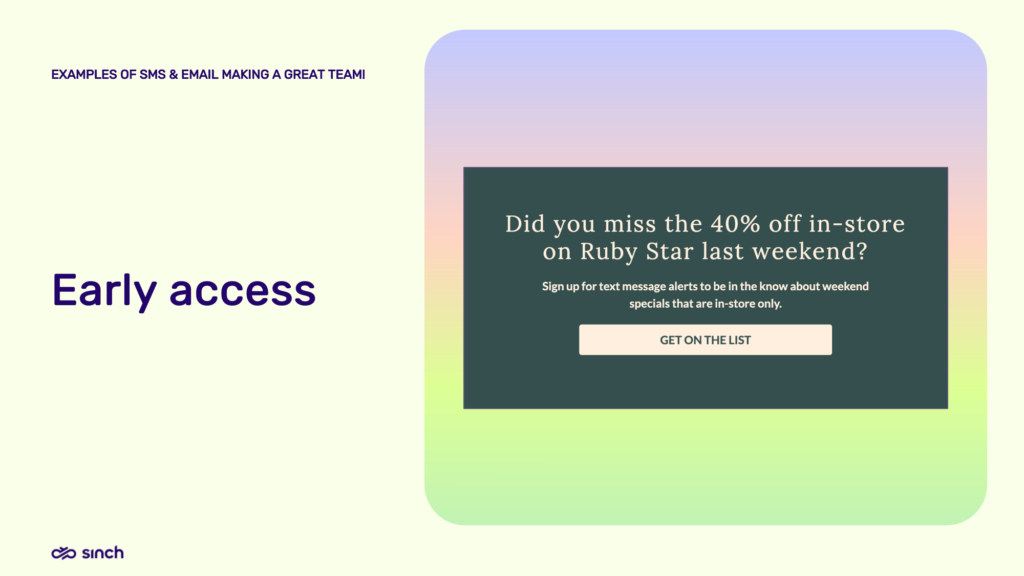
By keeping their most valuable deals on SMS, shared Jacobi, Ruby Star creates natural demand for SMS opt-in while preserving its premium status.
When collecting phone numbers, you could explain the unique value of each channel:
Then, maintain channel-specific benefits to prevent list fatigue. Ruby Star sends general promotions via email but reserves their best in-store deals (like their 40% off weekend specials) for SMS subscribers. This creates FOMO that drives SMS sign-ups while keeping both channels valuable.
Connect customer profiles accurately from the start. When someone opts into SMS, verify their email address to ensure unified messaging and proper tracking of cross-channel behavior.
Are you ready to get started with sending email and SMS at scale?
At Sinch, we offer solutions like Mailgun for an enterprise-ready email API, as well as an industry-leading SMS API.
With Sinch, you can:
For enterprise brands with complex messaging needs, our tools handle technical heavy lifting, so you can focus on crafting exceptional customer experiences. Whether you’re sending transaction notifications, marketing campaigns, or automated flows, our team can help you find the right solution that’ll adapt to your specific requirements. Contact us to get started.
Or, for more actionable insights for the holiday season, download our Email and SMS Holiday Marketing Playbook to see how top brands combine these channels for peak season success.